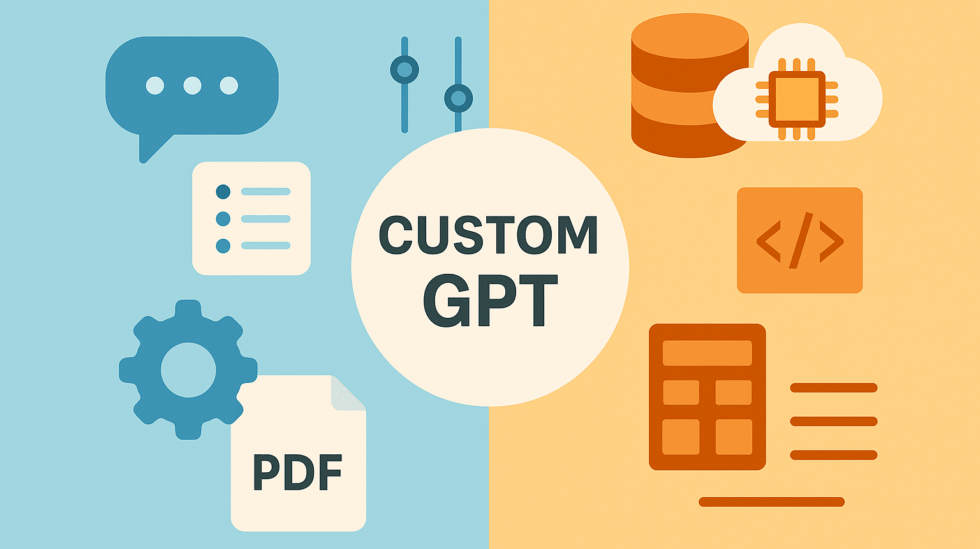Why Nvidia’s SLM Vision Matters for B2B Marketing

Summary
Nvidia says the future of AI isn’t big models—small, specialized language models can cut costs, boost speed, enable customization, and reduce AI’s environmental impact, making them ideal for many business and marketing uses.
By Win Dean-Salyards, Senior Marketing Consultant at Heinz Marketing
When most people think of AI, they picture massive, general-purpose models like GPT-4, Claude, or Gemini, systems seemingly capable of answering just about anything you throw at them (not to get into issues with AI hallucinations and the use of dubious sources). These large language models (LLMs) dominate headlines for their near-human performance and conversational format.
But Nvidia’s recent research paper makes a bold argument: the future of many AI applications, especially in “agentic” systems, belongs to small language models (SLMs), leaner, faster, more specialized AI tools. Mind you, they’re saying this even as much of their primary valuation is because of their status as critical hardware for data centers used to run complex LLMs, that SLMs don’t require.
This isn’t just a technical shift. If Nvidia is right, it could reshape how businesses deploy and make investments in AI, how marketers build customer experiences, and how organizations approach AI ethics.
Why Nvidia is Betting on Smaller Models
Nvidia’s core thesis is simple:
Most real-world AI use cases don’t require a giant, general-purpose brain; they need a focused, highly efficient specialist.
In “agentic” AI systems (think automated assistants, task bots, and process-driven AI workflows), the job isn’t to hold open-ended conversations but to perform a small set of repetitive, predictable tasks quickly and reliably.
SLMs are ideal for that because they:
- Cost less to run (lower compute, less energy)
- Respond faster (reduced latency)
- Can be deployed on-device or in low-power environments
- Specialize easily through fine-tuning for specific business needs
In Nvidia’s vision, companies will increasingly blend SLMs and LLMs, using SLMs for narrow, high-frequency tasks and reserving the big models for complex reasoning or unpredictable scenarios.
Why B2B Marketers Should Care
For B2B marketers, this shift could have three significant implications:
1. AI-Driven Customer Experiences Become Cheaper and Faster
Always-on chatbots, product recommendation engines, and real-time personalization tools could run on smaller, more efficient models. That means faster responses, reduced infrastructure costs, and fewer budget fights over AI experimentation.
2. Greater Customization Without Enterprise-Level Budgets
SLMs can be fine-tuned to a company’s exact messaging, tone, and product knowledge without the data hunger (and cost) of an LLM. This levels the playing field for mid-market companies who want sophisticated AI without LLM price tags.
3. Smarter Marketing Ops
Behind the scenes, SLMs could power internal marketing workflows, lead scoring, campaign optimization, and competitive monitoring, without draining resources from customer-facing initiatives.
The Business Case for Going Small
If your organization is building or buying AI tools, Nvidia’s recommendations are worth noting:
- Prioritize SLMs for repetitive, high-frequency tasks to reduce energy consumption and latency.
- Adopt modular AI architectures that mix SLMs and LLMs; think of it as using the right tool for the right job.
- Fine-tune SLMs quickly to keep pace with changing market demands, seasonal campaigns, or regulatory shifts.
For many B2B companies, the economics here are game-changing: you can scale AI adoption without scaling costs at the same rate.
The Ethical Dimension: Smaller Isn’t Just Cheaper, It’s Cleaner
There’s another reason to pay attention to SLMs: AI ethics and sustainability.
- Lower energy use = lower carbon footprint. LLMs require vast amounts of compute and energy. Training one can emit as much CO₂ as five cars over their lifetime. SLMs drastically cut that load.
- Reduced dependency on centralized AI providers. Smaller models can run locally, giving businesses more control over their data privacy and security.
- Fewer “hallucinations” for repetitive tasks. A model trained for a narrow scope is less likely to produce unpredictable or misleading outputs, which helps with compliance and brand trust.
If you’ve been hesitant to scale AI because of ethical concerns, SLMs offer a path forward that aligns better with responsible AI principles.
The Bottom Line
Nvidia’s research isn’t saying LLMs are obsolete; they’re just not the best fit for every job and are unlikely to dominate the majority of AI use cases in the future.
The real future might be hybrid: SLMs handling most of the load, LLMs stepping in if higher-order reasoning is needed.
For B2B marketers and business leaders, this could mean:
- Faster AI adoption without spiraling costs
- More tailored and consistent customer experiences
- A more straightforward path toward sustainable, ethical AI deployment
The smartest AI strategy in the next few years might not be thinking bigger, it might be thinking smaller.
If you want to chat about any of these, or anything in this post, please reach out: acceleration@heinzmarketing.com






